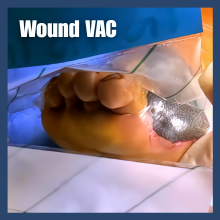Driving After Hip and Knee Replacement
Dr. Calendine is a hip and knee specialist with the Bone and Joint Institute of Tennessee in Franklin, Tennessee. Dr. Calendine specializes in anterior approach hip replacement, partial and total knee replacement and state-of-the-art robotic-assisted joint replacement surgery. In the following video and article, Dr. Calendine answers a question he often hears from joint replacement patients, "When can I drive after my hip (or knee) replacement surgery?"
RELATED VIDEOS:
Criteria for Driving After Surgery
After a joint replacement, what should a patient look for to be cleared to drive? How does the patient get cleared to drive?
This is a very common question for me to hear from both knee and hip replacement patients. The advice I give to my patients is that I cannot tell you a specific length of time it will require to be able to return to driving. There are a number of influencing factors, and there is no proven length of time. The most important factor is the type of surgery each patient is having. For instance, often hip replacement patients return to driving faster than most knee replacement patients.
If operating on someone who is younger and in very good shape physically that has had left hip replacement and drives an automatic transmission – they’re likely to be back behind the wheel much quicker than a patient is less physically fit and recovering from the knee replacement surgery.
I often will two main criteria for returning to driving. First and foremost, patients must be fully recovered from any anesthesia used during surgery and be off of all narcotic pain medication. It is extremely dangerous to drive under the influence of narcotic or other sedating medication.
Secondly, patients should be able to walk easily with minimal cane assistance. As a driver, you have to be able to quickly to react, accelerate, and hit the brakes. Most patients are able to perform the necessary lower extremity movements needed for driving once they are easily able to walk (with minimal assistance from a cane).
Consult Cory Calendine, MD, Orthopaedic Surgeon
If you are suffering from joint pain and stiffness and have not found symptom relief with over-the-counter options, CONTACT our office today to schedule a consult with Dr. Calendine. The team at the Bone and Joint Institute of Tennessee can customize a treatment plan that is best for your individual situation.
RELATED ARTICLES:



.png)
.png)



